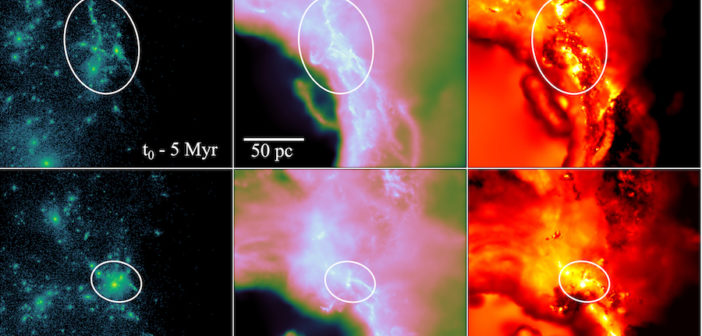How do globular clusters — massive and dense gravitationally bound stellar systems — form? A team of scientists led by Natalia Lahén (University of Helsinki, Finland) explores the possibility that the mergers of gas-rich dwarf galaxies can result in the formation of massive, low-metallicity clusters of stars much like the local globular clusters we observe today. The beautiful series of images above are frames from the authors’ hydrodynamical simulations of the aftermath of a dwarf-galaxy merger. The three sets of panels show surface density of stars (left) and gas (center), and the thermal gas pressure (right), at two times during the simulation (the bottom panels are from 2 million years later than the top). The simulations demonstrate the formation of hundreds of stellar clusters in the filamentary gas structures after merger, including some with properties like local globular clusters. For more information, you can check out the article below.
Citation
“The Formation of Low-metallicity Globular Clusters in Dwarf Galaxy Mergers,” Natalia Lahén et al 2019 ApJL 879 L18. doi:10.3847/2041-8213/ab2a13
